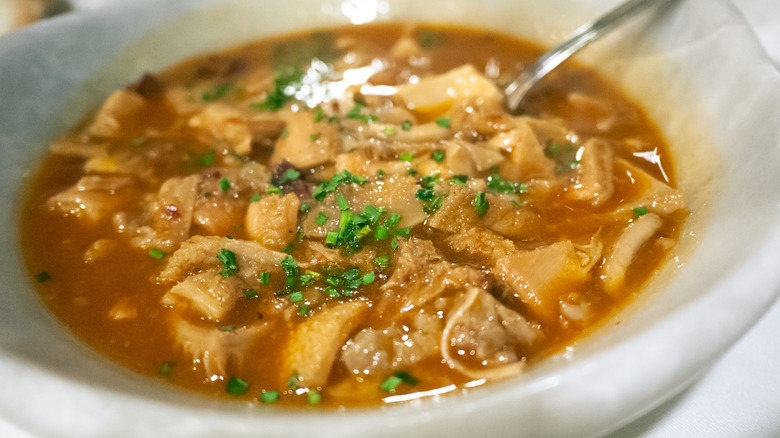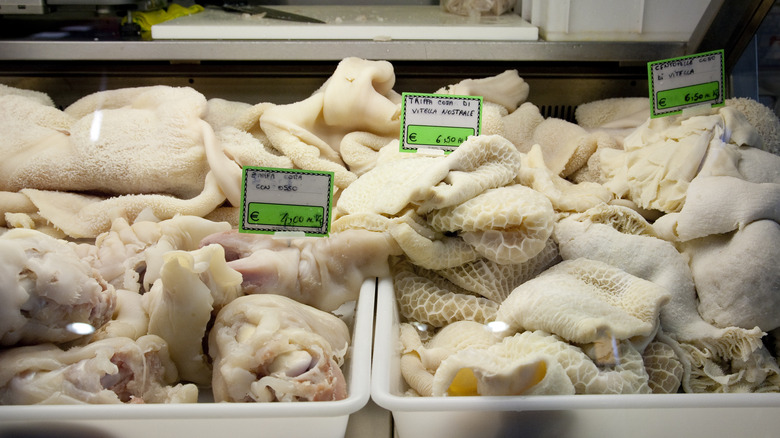What Cut Of Meat Is Tripe?
While checking out the varieties of offal at your local butcher counter (and perhaps considering what exactly you should do with turkey giblets), you may have run across a cut of off-white meat that resembles a honeycomb. This unusual-looking meat is actually the lining of either beef, hog, or sheep stomach and is commonly known as tripe. Most tripe that's eaten in the U.S. comes from beef cattle and is obtained from the first three stomach chambers of the animal — specifically, the rumen, reticulum, and omasum. Tripe may sometimes be called "white offal" alongside other organ meats such as intestines and the rest of the stomach.
Honeycomb tripe comes from the second stomach chamber, is mild in flavor, and is the most tender. Blanket tripe resembles a shaggy sheet and is from the rumen (the first stomach chamber). Book or bible tripe comes from the omasum. It gets its name because it looks somewhat like the pages of a book. Although the fourth stomach, the abomasum, has a glandular texture and isn't commonly eaten, some culinary traditions also use this offal in some dishes. No matter what you call it, tripe is a tough organ meat that generally requires a lot of scrubbing followed by long hours of cooking for it to become edible and tender.
Is tripe considered healthy?
Tripe is relatively rich in protein and other nutrients like vitamin B12, selenium, zinc, calcium, and iron. A three-ounce serving of cooked tripe only has 80 calories and fewer than four grams of total fat. However, its high cholesterol count (133 mg) keeps it from qualifying as a lean or extra-lean meat based on the FDA's guidelines. Tripe should be safe to eat, as the USDA inspects all tripe and other meats legally sold between states and imported into the U.S. When purchasing tripe, look for a cut that is pale and off-white in color.
Tripe isn't a popular meat in the U.S. despite the fact that, in the late 19th century, Campbell's sold a soup made with it, though this is a discontinued canned food that may never really come back. Traditional Mexican cooking has a tripe-forward soup called menudo while, in Spain, there's callos, a stew that features tripe, beans, and peppers. Cooked tripe can also be mixed with sautéed vegetables and added to eggs, salads, or served atop crusty bread.

